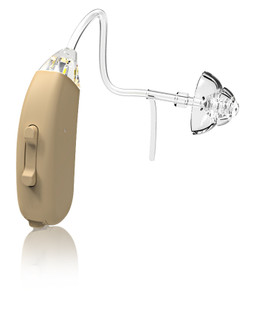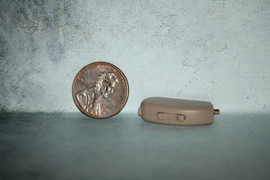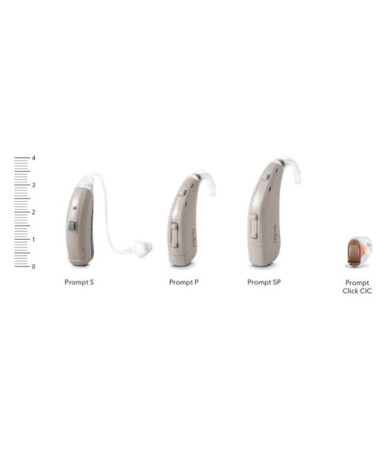Hearing Aid Styles Compared: Behind-the-Ear, In-the-Ear, and Invisible-in-Canal
Posted by DR Paul on Aug 04, 2023
Hearing aids come in a variety of styles, shapes, and sizes. While most hearing aid users often prioritize the sound quality, comfort, and affordability, the style of the hearing aid also plays a crucial role in their decision-making process. In this blog post, we will compare three of the most popular hearing aid styles: Behind-the-Ear (BTE), In-the-Ear (ITE), and Invisible-in-Canal (IIC) to help you make an informed decision about which hearing aid style is best for you.
Behind-the-Ear (BTE) Hearing Aid
Behind-the-ear hearing aids are one of the most classic and traditional styles of hearing aids, where the device sits behind the ear, and a small tube or wire connects it to a custom ear mold that sits in your ear canal. This hearing aid style is suitable for people with mild to severe hearing loss, and they are often the most durable, reliable, and have long battery life. BTE hearing aids also allow for numerous features, such as directional microphones, wireless streaming, and rechargeable batteries, making them a versatile option.
In-the-Ear (ITE) Hearing Aid
In-the-ear hearing aids can be custom-made to fit the contours of the wearer's ear canal, making them a comfortable and discreet option. They come in different sizes, from completely-in-the-canal (CIC) to full-shell ITE devices. ITE hearing aids are suitable for people with mild to moderate hearing loss and may be challenging to manage for those with dexterity issues. They are often more expensive than BTE hearing aids due to their smaller size, and some models may have a shorter battery life.
Invisible-in-Canal (IIC) Hearing Aid
Invisible-in-canal hearing aids are the smallest and most discreet style of hearing aids, where the device sits inside the ear canal, making them invisible to others. They are custom-made to fit the wearer's ear canal, making them a comfortable option. IIC hearing aids are suitable for people with mild to moderate hearing loss, and they come with a range of features, such as directional microphones and wireless connectivity. They do have a shorter lifespan and may require more frequent replacement due to their smaller batteries.
Pros and Cons of Each Style Hearing Aid
One of the best ways to determine which hearing aid style is right for you is to weigh the pros and cons of each style. For instance, BTE hearing aids are the most durable and suitable for a wide range of hearing losses. However, they are visible and may cause discomfort if not fitted properly. On the other hand, ITE and IIC hearing aids occupy less space and are less visible, making them suitable for people who prioritize aesthetics. However, they may be more expensive and have a shorter lifespan.
Choosing the Right Style Hearing Aid for You
In conclusion, a wide range of hearing aid styles exists, and each style offers its advantages and disadvantages. Ultimately, it would be best to choose the hearing aid style that best meets your hearing loss needs, comfort, sound quality, budget, and lifestyle. It's essential to consult with a hearing healthcare professional to discuss the best option for you and your hearing needs.
Conclusion:
Hearing aid technology has significantly evolved in recent years, and you can find a hearing aid style that best suits your needs, preferences, and lifestyle. By understanding the different hearing aid style, pros, and cons, you can make an informed decision about the ideal hearing aid style for you. Remember to consult with your hearing healthcare professional before choosing the right hearing aid style to ensure that you have the best device for your unique hearing loss.










